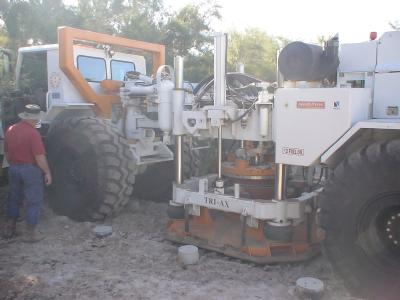
|
|
|
|
June 3, 2010
NEES@UCSB conducts live testing via HPWREN at the Wildlife Liquefaction Array in Imperial Valley By Hank Ratzesberger, NEES@UCSB, Institute for Crustal Studies On Tuesday, May 25th, the HPWREN network held up to a windstorm of traffic when live testing was conducted at the NEES@UCSB Wildlife Liquefaction Array in the Imperial Valley. The Network for Earthquake Engineering Simulation is a National Science Foundation Major Research and Equipment Facilities Construction grant that includes fourteen universities from Troy, New York to San Diego, California. HPWREN provides remote communication and data streaming for NEES@UCSB field sites in the Imperial Valley and at the Garner Valley near Idyllwild. Researchers from both NEES@UCLA (http://nees.ucla.edu) and NEES@RPI (http://nees.rpi.edu) watched over the final set of testing. Also at the test site was the University of Texas at Austin's "T-REX," tri-axial mobil shaker truck. The truck was positioned over an array of accelerometers installed by NEES@RPI to detect permanent ground deformation. The T-REX is able to generate ground waves so intense that they mimic actual earthquake conditions at close range.
When the T-REX wasn't shaking the ground, an eccentric mass shook a structural model built by NEES@UCLA to measure the effect of its foundation on the soil.
A special live video feed was available during highlights of the testing and separately, a few video clips have been edited into an about 18.6MB short movie. |

